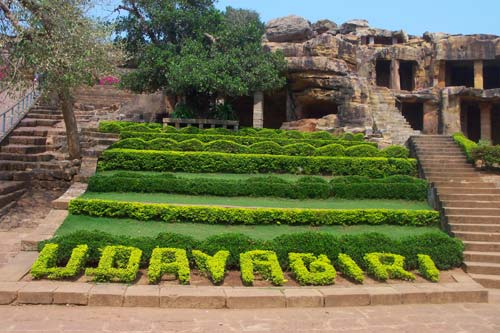Udayagiri fort timings : 9:30 am to 5:30 pm.
Udayagiri Fort is open on all days except public and festival holidays.
Udayagiri Fort which is Located about 100 kms. From Nellore. Udayagiri Fort commanding at a height of 3079 feet. Boasts of great natural beauty. The hill side has lush vegetation and beautiful waterfalls. The ruined fort is attracting the Tourists in a big way. However, the access is only by steps and there is no road to the Fort.
During the rule of the Gajapathis and the Vijayanagar Rulers, this Town grew to great splendor. The ruins of 365 Temples found in the Town reflected the sculpture and architecture of various periods. The structure on the hill such as the RanganathaTemple reflects Chola culture, the Balakrishna Mandiram reflects Pallava culture and the Paruveta Mandapam reflects Vijayanagara Culture. Other structures include Chinna Masjid and pedda Masjid. A great Sufi Saint belonging to the 18th Century. Rahamathulla Nayab Rasool got absorbed in the higher selfhere. Every year the Sandal Festival is celebrated on the 26th of Rabi-UI-Aval month.
 The Hill of Udayagiri is also popularly known a Sanjeevi Hills as there are so many medicinal plants on the hill. This place can be developed on par with Golconda Fort of Hyderabad. It is possible to introduce attraction like Light and Sound Show etc.,
The Hill of Udayagiri is also popularly known a Sanjeevi Hills as there are so many medicinal plants on the hill. This place can be developed on par with Golconda Fort of Hyderabad. It is possible to introduce attraction like Light and Sound Show etc.,
History:
The fort was built by Gajapatis and Vijayanagara kings in the 14th and 15th centuries. The army of Krishna Deva Raya attacked the fort. The fight lasted for 18 months and resulted in the end of Gajapatis rule from the Telugu region. It was later ruled by chieftains of the Nawabs of Golconda and Arcot. During the rule of the Gajapathis and the Vijayanagara rulers, this town grew to great splendour and the ruins of 365 temples reflect the sculpture and architecture of various periods.
Architecture
A towering peak reaching a height of 994 m (3,261 ft) can be seen here, which is called Sanjiva Hill because a wide variety of medicinal herbs grow on it. Local stories have mentions of the existence of “Sanjeevani” (a life saving herb) on these hills. The remains of several ancient temples, remarkable for their architecture are also seen. The fort complex consists of thirteen fortresses, eight on the hill and three below covering an area of about seven miles.
The structures on the hill such as the Ranganatha Temple (Chola period), the Balakrishna Mandiram (Pallava period) and the Paruveta Mandapam (Vijayanagara period), reflect the respective styles and culture.Other structures include Chinna Masjid and Pedda Masjid. A great Sufi saint belonging to the 18th century, Rahamathulla Nayab Rasool, got absorbed in the higher-self here. Every year the Sandal Festival is celebrated on the 26th of the Rabi-UI-Aval month. Recently, officials of the Department of Archaeology found an underground tunnel within the fort. Presently, the fort has been turned into a bio-diversity park by the Tamilnadu forest department, with sites of historical importance, such as De Lannoy’s tomb, remaining as protected archaeological sites under the Archaeological Department of India.
